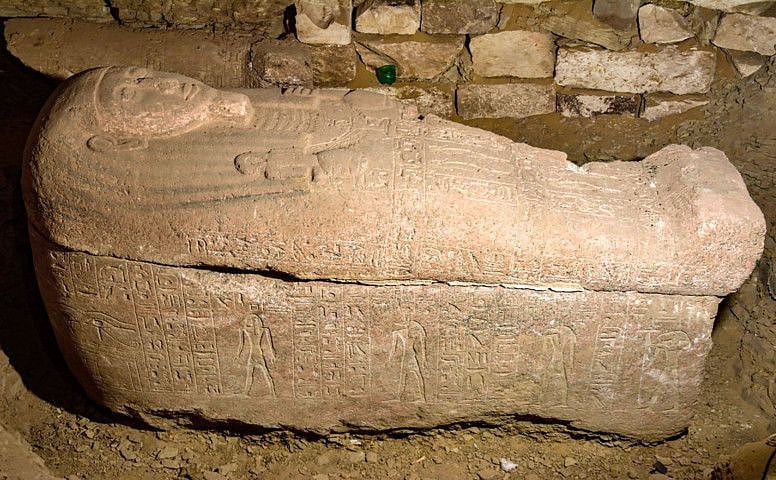Egypt unveils ancient Rameses II-era ‘royal secretary’ sarcophagus
The tomb of Ptah-em-uya from over 3,200-years ago was found last year

CAIRO: Egypt has unveiled a sarcophagus of a senior royal official from over 3,200-years ago at the Saqqara archaeological site south of Cairo, the latest in a series of spectacular discoveries in the area.
A team of Egyptian archaeologists from Cairo University found the red granite sarcophagus of Ptah-em-uya, “a high-ranking official” under Rameses II, who ruled Egypt in the 13th century BC, the antiquities ministry said.
The noble was “royal secretary, chief overseer of cattle, head of the treasury of the Ramasseum,” Rameses’ funerary temple in the Theban necropolis at Luxor, said Mostafa Waziri, head of Egypt’s Supreme Council of Antiquities.
The official was also “responsible for the divine offerings to all the gods of Upper and Lower Egypt”, Waziri added.
The tomb of Ptah-em-uya was found last year.
Saqqara is a vast necropolis of the ancient Egyptian capital Memphis, a UNESCO world heritage site home to more than a dozen pyramids, animal burial sites and ancient Coptic Christian monasteries.
The current excavation season revealed the granite sarcophagus, “covered in texts” to “safeguard the deceased” and “scenes representing the sons of the god Horus,” according to the antiquities ministry.
Saqqara has been the site of a flurry of excavations in recent years.
Most recently, Egypt unveiled a cache of 150 bronze statuettes in May, five ancient tombs in March, and more than 50 wooden sarcophagi last year dating back to the New Kingdom, which ended in the 11th century BC.
Critics say the excavations have prioritised finds shown to grab media attention over hard academic research.
But the finds have been a key component of Egypt’s attempts to revive its vital tourism industry, the crowning jewel of which is the long-delayed inauguration of the Grand Egyptian Museum at the foot of the pyramids.
Dubbed “the largest archaeological museum in the world” by officials, it is expected to open this year.
Sign up for the Daily Briefing
Get the latest news and updates straight to your inbox
Network Links
GN StoreDownload our app
© Al Nisr Publishing LLC 2025. All rights reserved.